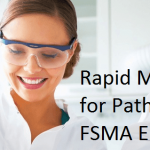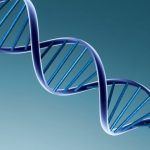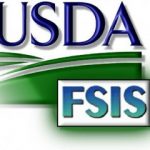fasdf@sadf.tu
Rapid Methods for Pathogen Detection in the FSMA Era
Why Rapid Methods? Rapid methods of pathogen testing have been gaining acceptance in the food industry. Recent advances in technology result in faster detection and identification of pathogens, more convenient, more sensitive, more reproducible, and more specific than conventional methods. The main reasons for their adaptation are because faster results mean: Faster intervention and corrective actions Fewer lost lots or reduced amount of product in a contamination event Faster reaction to a problem Improved throughput and reduced warehouse space Decreased manufacturing cycle through faster release of inventory Ability to link strains of pathogens to a specific case Accelerates root cause...
fasdf@sadf.tu
Comments about “Modified Polymerase Chain Reaction Distinguish between Live and Dead Bacteria”
The blog about PCR and distinguishing between live and dead bacteria have drawn some comments as shown below: Gerold Schwarz You might have a look for Reagent D – we established a protocol for Enterobacteriaceae in instant milk formula and Yeast and Mold in dairy products – it works similar utilizing a halogen light in addition source to eliminate dead cells before amplification. Gerold Schwarz Send the following additional Information: By: Dr. Gerold Schwarz, Produktmanager BIOTECON Diagnostics GmbH Elimination of DNA form dead cells prior a PCR-Setup: Reagent D is designed for the rapid elimination of DNA from dead cells to avoid...
fasdf@sadf.tu
Listeria monocytogenes is back in the News
Blue Bell Recall is due to Aspen Hill In October 2016, BioExpert reported that cookie dough contaminated with Listeria Listeria monocytogenes is back in the News from Aspen Hills (Garner, IA) has resulted in a number of recalls including Blue Bell ice cream. Recently, the FDA inspectors have confirmed that Listeria found in Blue Bell ice cream, prompting the recall of its products in October 2016, came from Aspen Hills. Federal inspections of the cookie dough maker Aspen Hill confirmed, using Whole Genome Sequencing (WGS) analysis, that the Listeria isolated from Aspen Hill was found in the Blue Bell product. This settled the dispute between the...
fasdf@sadf.tu
Rapid Methods for Food Pathogens- an Update
The USDA / FSIS recently updated the list of Foodborne Pathogen Test Kits Validated by Independent Organizations. The rapid detection of pathogens in food is important to ensure the safety of consumers. Traditional methods to detect foodborne pathogens rely on time-consuming growth in culture media, followed by isolation, biochemical identification, and sometimes serology. Recent advances in technology result in faster detection and identification of pathogens, more convenient, more sensitive, and more specific than conventional methods. These new methods are often referred to as “rapid methods”. It is important to remember that in most foods, rapid methods still lack sufficient sensitivity and specificity...




